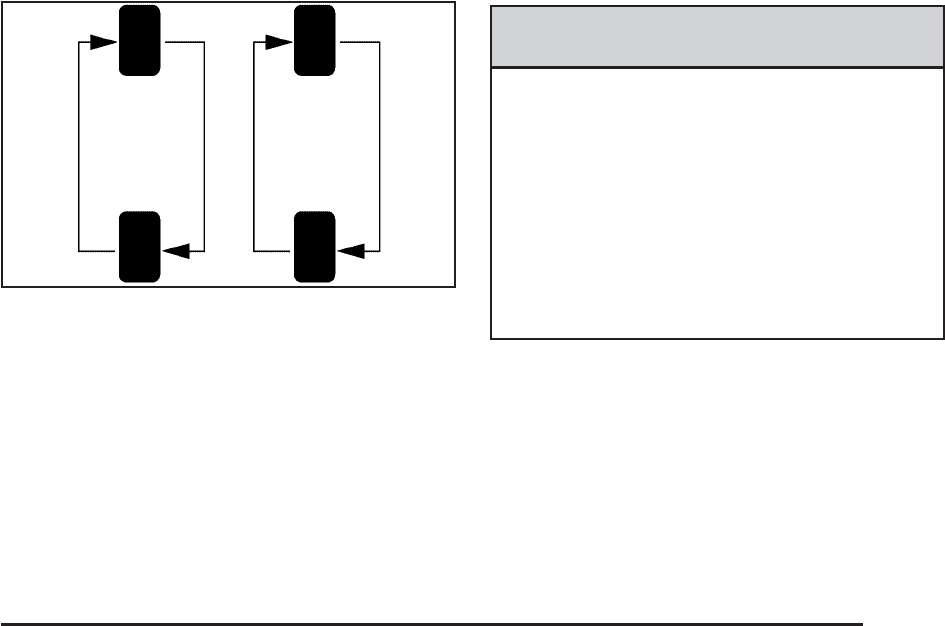
When rotating your tires, always use the correct rotation
pattern shown here.
Tires should only be moved from front to rear and rear
to front on the same side of the vehicle.
Do not include the compact spare tire in your
tire rotation.
After the tires have been rotated, adjust the front and
rear inflation pressures to the amounts shown on
the Tire and Loading Information label. Make certain
that all wheel nuts are properly tightened. See “Wheel
Nut Torque” under Capacities and Specifications on
page 5-96.
{CAUTION:
Rust or dirt on a wheel, or on the parts to
which it is fastened, can make wheel nuts
become loose after a time. The wheel could
come off and cause an accident. When you
change a wheel, remove any rust or dirt from
places where the wheel attaches to the vehicle.
In an emergency, you can use a cloth or a
paper towel to do this; but be sure to use a
scraper or wire brush later, if needed, to get all
the rust or dirt off. See Changing a Flat Tire on
page 5-70.
Vehicles equipped with a tire pressure monitoring
system will need to reset (initialize) the system after
each tire rotation. See Tire Pressure Monitor System on
page 5-60.
5-63


















